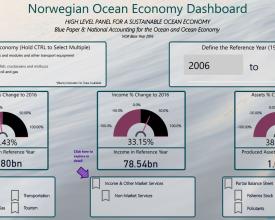Tableaux de bord et indicateurs de l'économie bleue

Les océans sont des sources intégrales de croissance économique et de prospérité pour de nombreuses régions. Pour quantifier leur importance et évaluer leur utilisation durable, il faut plus qu'un simple indicateur global tel que le "PIB océanique". Si les indicateurs principaux peuvent être des outils utiles pour résumer des données complexes, les indicateurs axés sur la production qui reflètent la part de l'économie liée aux écosystèmes ne permettent pas d'évaluer la durabilité et la santé des actifs océaniques. Une grande partie de l'économie océanique repose sur l'utilisation du capital naturel ; cependant, l'épuisement de ce capital n'est pas pris en compte dans les mesures de type PIB. Il convient donc d'utiliser plusieurs indicateurs pour mesurer la dégradation du capital naturel et des flux de production. La disponibilité d'outils numériques de tableaux de bord rend la génération de ces indicateurs relativement aisée et permet de répondre avec souplesse à des questions politiques personnalisées. Nous démontrons ici la technique du tableau de bord en prenant pour exemple l'économie des océans en Norvège grâce à des données accessibles au public provenant de Statistics Norway.
Contexte
Défis à relever
L'utilisation durable de nos ressources marines et côtières nécessite la combinaison de données économiques, sociales et environnementales. Dans de nombreux pays, ces données sont collectées par différents ministères, à des intervalles différents, et peuvent ne pas être facilement synthétisées pour l'élaboration des politiques. Les comptes des océans et les tableaux de bord numériques facilitent le regroupement de ces données dans un cadre cohérent, exhaustif et comparable, de sorte que les données existantes puissent être pleinement exploitées et que les lacunes en matière de données puissent être facilement identifiées.
Emplacement
Traiter
Résumé du processus
Les tableaux de bord des multiples indicateurs permettant d'évaluer la durabilité de l'économie océanique d'un pays nécessitent la collecte périodique de données auprès de différents ministères. Ces données permettent de dresser des bilans d'actifs qui sont essentiels pour évaluer les compromis entre les flux économiques et la dépréciation/réduction de la base d'actifs qui génère ces flux.
Blocs de construction
Bilans des actifs
Les bilans d'actifs enregistrent les stocks d'actifs et leurs valeurs dans les comptes nationaux. Alors que les flux de production économique - biens et services - ont été utilisés comme indicateurs principaux de la "santé" d'une économie, ces mesures ne tiennent pas compte de la dépréciation ou de la dégradation de la base d'actifs à l'origine de ces flux. Les changements dans le bilan des actifs refléteraient, par exemple, la réduction de la valeur des stocks de pêche épuisés.
Facteurs favorables
Un bilan des actifs est utile pour la comptabilité du capital naturel et l'évaluation de l'économie bleue nécessite des évaluations périodiques des stocks d'actifs qui sont systématiquement collectés et comparables. Cela signifie des évaluations régulières des stocks de pêche, des gisements océaniques et minéraux sous-marins et des infrastructures portuaires, pour n'en citer que quelques-uns. Les comptes monétaires nécessitent des prix pour les actifs non marchands du capital naturel.
Leçon apprise
- Si les comptes monétaires sont l'idéal, les comptes physiques (par exemple, la biomasse du stock de frai en kg) peuvent être utiles lorsqu'il n'existe pas de prix du marché.
- Le suivi des changements dans le bilan des actifs est plus important qu'un bilan complet des actifs compilé comme un exercice ponctuel. Ces données doivent être collectées régulièrement pour être utiles au suivi de la durabilité de l'économie bleue.
Normes et accès aux données interagences
Plutôt que d'harmoniser les données après leur collecte, des normes interagences pour la collecte des données sous-jacentes des comptes physiques et monétaires permettront d'agréger et de désagréger, de fusionner et de filtrer facilement les données. Ces normes devraient couvrir le stockage et la collecte des données afin que les données recueillies au fil du temps soient comparables. En outre, le partage des données entre les ministères et les départements permettra d'éviter la réapparition de données lorsqu'elles existent.
Facteurs favorables
- Coopération interinstitutionnelle
- Offices statistiques habilités à fixer des normes
- Sécurité des données et infrastructure de soutien sous-jacente
Leçon apprise
La collecte de données adaptées pour répondre à des questions politiques particulières peut être redondante, à moins que l'ensemble des efforts de collecte de données existants ne soit accessible et ne puisse être désagrégé. Les données nécessaires à la comptabilité des océans existent peut-être déjà, mais elles sont collectées par les ministères de l'environnement ainsi que par les ministères du commerce et des transports.
Impacts
L'utilisation de tableaux de bord numériques pour assembler et synthétiser les données des comptes de l'océan peut améliorer la prise de décision pour l'économie bleue. La capacité des tableaux de bord numériques à désagréger facilement de multiples indicateurs pour des industries, des périodes ou des régions géographiques spécifiques peut aider à résoudre rapidement les désaccords sur le champ d'application pertinent et l'importance - ou l'insignifiance - des différentes définitions des limites pour les résultats politiques potentiels. Le "zooming" que permettent les tableaux de bord numériques permet aux parties prenantes de se situer, ou de situer leurs communautés, dans les données sans qu'il soit nécessaire que les bureaux de statistiques procèdent à une nouvelle totalisation.
Bénéficiaires
Les bénéficiaires de l'utilisation d'approches de tableau de bord pour la gestion et la comptabilité des ressources naturelles sont notamment les décideurs politiques, les parties prenantes des zones marines et côtières, les statisticiens nationaux, etc.



